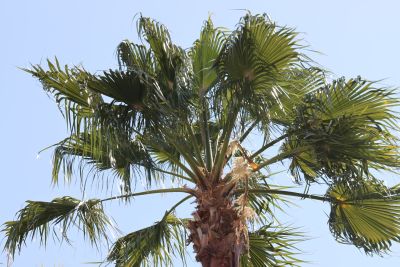What are Cabbage Palms?
Cabbage palms are capable of reaching heights of 90 feet (30 m.) or more in the wild, but in cultivation they usually grow only 40 to 60 feet (12-20 m.) tall. The tree’s 18 to 24 inch (45-60 cm.) wide trunk is topped by a rounded canopy of long fronds. It isn’t usually considered a good shade tree, but clusters of cabbage palms can provide moderate shade. The lower fronds sometimes drop from the tree leaving their base, called a boot, attached to the trunk. These boots create the cross-hatched pattern on the trunk of the tree. As the tree matures, the older boots fall off leaving the lower part of the trunk smooth.
Cabbage Palm Growing Region
The cabbage palm growing region includes USDA plant hardiness zones 8b through 11. Temperatures below 11 F. (-11 C.) can kill the plant. Cabbage palms are particularly well-adapted to the Southeast, and they are the state tree of both South Carolina and Florida. Nearly hurricane-proof, the tree remains standing against the wind long after pine trees snap in two and oaks are uprooted. Choose a sunny or partly shaded site in any well-drained soil. The hardest part about growing a cabbage palm tree is getting it planted just right. Take care with the roots when transplanting the tree. Cabbage palms are drought-tolerant, but only after all the roots that were damaged during transplanting regrow from the base of the tree. Until then, you’ll have to water deeply and often to make sure the tree gets the moisture it needs. Cabbage palm care is easy once the tree is established. In fact, it will do just fine if left to its own devices. One thing you may want to do is remove the little seedlings that come up where the fruit falls to the ground because they can become weedy.
